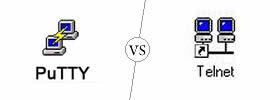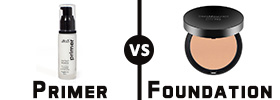Difference between HTC One X+ and HTC First
Key Difference: The HTC One X+ sports a 4.7-inch super LCD 2 touch screen with approximately 312 ppi pixel density, meaning the screen is pretty awesome and it does not show any pixels. The device is powered by 1.7 GHz Quad-core NVIDIA Tegra 3 process making it faster than the original HTC One X. HTC First is the first phone that will be released running on the Facebook Home user interface. The phone will be powered by a Qualcomm MSM8930 Snapdragon 400 1.4 GHz Dual-core Krait and a 1 GB of RAM.

HTC is a popular smartphone company and has been touted for many beautifully designed phones. The phones are smart, sleek and to the point with no extra marketing gimmick. HTC maintains this with the launch of the HTC One X+. The HTC One X+ is a new phone that shares many similarities to its big brother the HTC One X; however, it also shines in many places where the predecessor shied. The HTC One X+ is basically an upgraded version of the HTC One X and hit the market in November 2012.
The HTC One X+ sports a 4.7-inch super LCD 2 touch screen with approximately 312 ppi pixel density, meaning the screen is pretty awesome and it does not show any pixels. The screen has excellent resolution and shows sharp and crisp clear photos and videos. The screen is protected by Corning Gorilla Glass 2 that keeps it from getting minor day-to-day scratches. The device is sleek and thin in general, but has put on a little extra weight (5 grams) compared to the original One X. The phone is covered in a soft-touch polycarbonate plastic chassis that has smooth curved corners. The soft matte plastic makes it easy to grip the phone and keeps it from slipping through the fingers. The phone comes incorporated with the HTC Sense UI v4+, which is basically a combination of the HTC Sense and Jelly Bean. The combination of the two provides additional features such as: Google Now, Voice search, faster screen navigation, new gallery app (organizes photos by events and location) and HTC Get Started (allows PC to configure the phone faster).
The device is powered by 1.7 GHz Quad-core NVIDIA Tegra 3 process making it faster than the original HTC One X. The faster processor allows seamless transitions between apps and makes the device smooth to work with. There was no hindering or jerking when operating the device. The One X+ comes installed with Android v4.1 (Jelly Bean) right out of the box. The device comes with 32 and 64 GB internal storage capacity that is not expandable and 1 GB RAM.
The device houses an 8 MP rear camera with auto focus, LED flash, and BSI sensor, along with a 1.6 MP front camera for video conferencing. The front camera also has a countdown features that counts down to the moment the picture is being taken to ensure that the user is camera ready. The camera comes with many additional features that help the phone stand out against all the other devices. The features include: F2.0 aperture and 28mm lens, Dedicated HTC ImageChip, VideoPic, Continuous shooting, Smart Flash, Sightseeing mode, Video stabilization, Slow motion video capture and playback and ImageSense. The ImageSense allows the phone to take faster and the best photos under any lighting. The VideoPic is a new feature that allows users to take images while recording a video as well as taking an image when playing an already recorded video. The Smart Flash provides five levels of flash that adjust automatically when trying to take a shot, while the Sightseeing mode allows the camera to be handy during outings, so that it can be easily accessible.
The device houses a non-removable 2100 mAh Lithium-ion Polymer battery, which according to tests by many review website, dies pretty quickly. When fully-working the battery does not even last a whole day. However, no official data has been released by the company regarding the Talk-time and the Stand-by time. The company has also added the Beats Audio sound enhancement to its speakers as well as headset and it can be turned on and off by the user. The phone has been a popular hit with many that require a good sturdy budgeted phone with an excellent camera.

In today’s world, social networking is more important that air of water. Some people might be able to get through without food, but not without checking their Facebook accounts at least a few times during the day. Facebook realizing the important part it plays in people’s social lives and recognizing the need for Facebook integration on mobile phones, has collaborated with HTC for new Facebook phone: the HTC First.
HTC First is the first phone that will be released running on the Facebook Home user interface. This isn’t the first time that HTC and Facebook have collaborated. HTC has previously launched the ChaCha, Status, and Salsa, all of which had special Facebook integration, beyond the normal app. However, the HTC First will be the first to actually have a user interface (UI) based on Facebook.
The Facebook Home UI will consist of Cover Feed which will use the home screen and lock screen to show content posted by friends on Facebook, as well as notifications from other apps. It also has an overlay over any and all apps, which allow users the ability to message others via Facebook or SMS, without leaving the app. The lock icon on the lock screen will show the profile picture of the user.
The HTC First also offers the users the ability to turn off the Facebook Home UI, in case they choose to. When Facebook Home is disabled, the phone will revert to stock Android, in this case Android 4.1 Jelly Bean. The phone will also be the first smartphone to include Instagram, recently-acquired by Facebook, as a pre-loaded app.
The phone will be powered by a Qualcomm MSM8930 Snapdragon 400 1.4 GHz Dual-core Krait and a 1 GB of RAM. The phone will come with as in-built memory of 16 GB and no external memory. The phone also has an embedded Li-Po 2000 mAh battery.
The phone has a 4.3 inch Super LCD capacitive touchscreen with a resolution of 720 x 1280 pixels. The primary camera on the phone is a 5 MP with BSI sensor and a 1.6 MP front-facing secondary camera, also with BSI sensor.
The information for the detailed table about the two phones has been taken from HTC website, theverge.com and GSMArena.com.
|
|
HTC One X+ |
HTC First |
|
Launch Date |
November 2012 |
April 2013 |
|
Company |
HTC |
HTC |
|
Size |
134.36 x 69.9 x 8.9mm |
126 x 65 x 8.9 mm (4.96 x 2.56 x 0.35 in) |
|
Display |
4.7 inch super LCD 2 touch screen |
4.3 inches Super LCD capacitive touchscreen, 16M colors |
|
Screen |
720 x 1280 pixels (~312 ppi pixel density) |
720 x 1280 pixels (~342 ppi pixel density) |
|
Protection |
Corning Gorilla Glass 2 |
- |
|
Weight |
135 grams |
123.9 g (4.34 oz) |
|
2G Network |
GSM 850 / 900 / 1800 / 1900 |
GSM 850 / 900 / 1800 / 1900 |
|
3G Network |
HSDPA 850 / 900 / 1900 / 2100 HSDPA 850 / 1900 / 2100 - for AT&T |
HSDPA 850 / 900 / 1900 / 2100 |
|
4G Network |
LTE 700 MHz Class 17 / 1700 / 2100 - for AT&T |
LTE 850 / 1900 |
|
GUI |
HTC Sense UI v4+ |
Facebook Home UI |
|
CPU speed |
1.7 GHz Quad-core NVIDIA® Tegra® 3 |
Dual-core 1.4 GHz Krait |
|
GPU |
ULP GeForce 2 |
Adreno 305 |
|
OS |
Android OS, v4.1.1 (Jelly Bean) |
Android OS, v4.1 (Jelly Bean) |
|
Chipset |
NVIDIA Tegra 3 AP37 |
Qualcomm MSM8930 Snapdragon 400 |
|
RAM |
1 GB |
1 GB LPDDR2 |
|
SIM Size |
microSIM |
Micro-SIM |
|
Internal Memory |
32/64 GB |
16 GB |
|
Expandable Memory |
No |
No |
|
Sensors |
Gyro sensor, G-Sensor, Digital compass, Proximity sensor, Ambient light sensor |
Gyro sensor, Tri-axis Accelerometer, Proximity sensor, Ambient light sensor |
|
Connectivity |
3.5 mm stereo audio jack, NFC capable, Compliant with Bluetooth 4.0, Bluetooth with aptX™ enabled, Wi-Fi®: IEEE 802.11 a/b/g/n, DLNA®, micro-USB 2.0 (5-pin) port with mobile high-definition video link (MHL) for USB or HDMI connection |
3.5 mm stereo audio jack NFC capable Compliant with Bluetooth 4.0 BLE Wi-Fi: IEEE 802.11 a//b/g/n micro-USB 2.0 (5-pin) port |
|
Data |
GPRS, EDGE, WLAN, Bluetooth, NFC, USB. |
GPRS, EDGE, WLAN, Bluetooth, USB, NFC |
|
Speed |
HSDPA, 21 Mbps; HSUPA, 5.76 Mbps - Global version / HSDPA, 42 Mbps; HSUPA, 5.76 Mbps; LTE |
HSDPA, HSUPA |
|
WLAN |
Wi-Fi 802.11 a/b/g/n, dual-band, DLNA, Wi-Fi hotspot |
Wi-Fi 802.11 a/b/g/n, dual-band, Wi-Fi hotspot |
|
Bluetooth |
Bluetooth v4.0 with A2DP |
Yes, v4.0 with A2DP, LE |
|
USB |
microUSB v2.0 (MHL) |
Yes, microUSB v2.0 |
|
Primary Camera |
8 MP camera with auto focus, LED flash, and BSI sensor |
5 MP, 2592x1944 pixels, autofocus, LED flash |
|
Secondary Camera |
1.6 megapixel front camera (720p for video recording) |
1.6 MP BSI front camera (ultrawide angle) |
|
Video |
1080p HD video recording |
1080p Full HD video recording |
|
Camera Features |
|
|
|
Sound Enhancement |
Beats Audio |
Active noise cancellation with dedicated mic, Speaker with built-in amplifier IC (support 2.55V) |
|
Audio supported formats |
.aac, .amr, .ogg, .m4a, .mid, .mp3, .wav, .wma |
.aac, .amr, .mp3, .wav, .wma (Windows Media Audio 9) |
|
Video supported formats |
.3gp, .3g2, .mp4, .wmv (Windows Media Video 9), .avi (MP4 ASP and MP3) |
MP4/H.263/H.264/WMV player |
|
Battery Capacity |
Non-removable 2100 mAh Li-ion Polymer battery |
Embedded rechargeable Li-Po 2000 mAh battery |
|
Talktime |
No official data released |
No official data released |
|
Standby Time |
No official data released |
No official data released |
|
Available Colors |
Black, White |
Black, Black/White, Black/Blue, Black/Red |
|
Messaging |
SMS(threaded view), MMS, Email, Push Mail, IM, RSS |
SMS (threaded view), MMS, Email, Push Email |
|
Browser |
HTML5, Adobe Flash |
HTML5 |
|
Radio |
Stereo FM radio with RDS |
- |
|
GPS |
GPS with A-GPS support and GLONASS |
Yes, with A-GPS support and GLONASS, Digital compass |
|
Java |
Java with Java MIDP emulator |
Yes, via Java MIDP emulator |
|
Additional Features |
|
|
Images Courtesy: htc.com









Add new comment